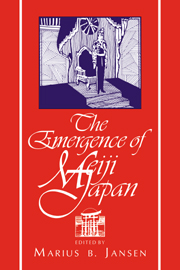5 - Japan's drive to great-power status
Published online by Cambridge University Press: 05 June 2012
Summary
Nothing is more striking, in tracing Meiji Japan's foreign affairs, than the fact that the Meiji period coincided with the emergence of several “modern states.” The half-century before the outbreak of World War I in 1914 witnessed political, economic, social, and intellectual developments in the West that coalesced into the development of national entities, outlines of which have remained to this day. England, France, Germany, Italy, and other European countries, as well as the United States, evolved as centralized and integrated mass societies that, for want of a better term, have been called modern states. Although no two modern states were exactly alike, they were generally characterized by centralization of state authority, on the one hand, and mass incorporation into the economy and polity, on the other. These developments had, of course, been preceded by the democratic and the industrial revolutions of the late eighteenth and the early nineteenth century, but it was in most instances only after the 1860s that these earlier, and ongoing, revolutions conspired with other trends to create conditions for unified state systems.
The twin phenomenon of centralization and mass incorporation may be illustrated by the United States, the country that held the greatest fascination for the Japanese during the two decades after Perry. The America of Perry's days was not yet a full-fledged modern state. It was a country with serious cleavages between regions and economic interests.
- Type
- Chapter
- Information
- The Emergence of Meiji Japan , pp. 268 - 330Publisher: Cambridge University PressPrint publication year: 1995
- 3
- Cited by



